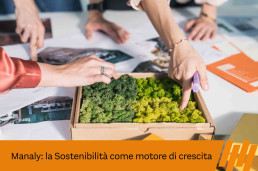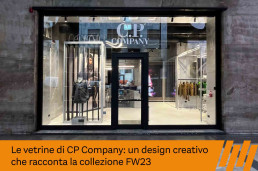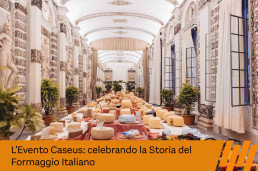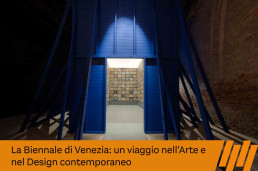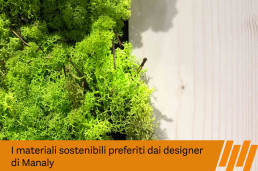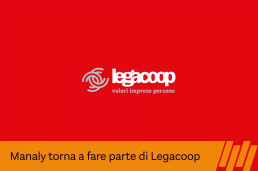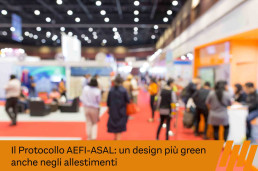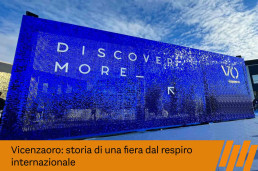The starting point of Manaly: event setup
Event setup is an activity that combines creativity, organization, and precision. Every event, whether it is a fair, a conference, a festival, or a ceremony, requires careful planning that considers not only the aesthetic aspect but also the functionality and safety of the spaces. With 40 years of experience in the industry, Manaly has made event management the real turning point in its history. Continue reading the article to learn more!
The History of Manaly: From Origins to Success
The story of Manaly begins in 1891 when a group of 12 enterprising young men decided to found a cooperative with a name that represented the spirit of their initiative: Manovali Nati Liberi, today known as Manaly. The goal was clear: to work with passion, aiming for professional and personal well-being and growth. In the early years, Manaly focused on renovation, restoration, building and green area maintenance, and general porter services. These activities laid the foundation for a versatile and reliable cooperative called Manaly Services.
The turning point came in 1984 when Manaly won the contract for the setup of the Mozart Festival in Vicenza, the city's most prestigious event. This assignment marked the beginning of specialization in event setup, expanding services to the theatrical and fair sectors. Since 1989, Manaly began to focus on trade show exhibitions, gradually reducing the original activities. This evolution led to the creation of Manaly Stand Events, eventually becoming today's Manaly Design&Build, a reference point in the event setup and trade show design sector.
Curious to learn more? Through the historical archive of Manaly, you can immerse yourself in the highlights that have defined our journey. Click here to browse it!
The Art of Event Setup: Synergy Between Aesthetics and Functionality
The process for event setup begins with planning, where the event's objectives and the client's needs are defined. Next comes the design phase, in which detailed layouts, scenographies, and decorations are created. Logistics play a crucial role: coordinating setup and dismantling times, managing suppliers, and ensuring everything is perfectly in order requires experience and competence.
A successful setup is one that amazes the participants, creating an environment that fully reflects the desired theme and atmosphere, without neglecting comfort and safety. Event setup is therefore a combination of aesthetics and functionality, where every detail counts to transform a vision into reality.
Click here to learn more about how Manaly manages event setups!
Innovation and Sustainability: The Future of Event Setup
Event setup is continuously evolving, with increasing attention to innovation and sustainability. Advanced technologies are revolutionizing the way events are conceived and experienced, improving participants' experience and optimizing design and setup processes. At the same time, sustainability has become a fundamental pillar. The use of recyclable materials, the implementation of eco-friendly practices, and waste reduction are now essential for companies in the sector.
A concrete example is the event that Manaly set up for Inditex, developed in Zara's flagship store during the Fuorisalone in Milan. In this project, the structure had to be built with sustainable and fully recyclable fabrics, in line with Inditex's "zero waste" approach. The structure transformed the store's entrance into a sensory pathway, harmonizing with the brand's heritage and dialoguing with the original architecture. Take a look by clicking here!
If you need to set up or organize a corporate event or want to design your trade show stand, you can rely on us at Manaly. For over 40 years, we have been supporting companies in identifying the best expression solution. Contact us and find out if we are right for you!
Manaly: Sustainability as a Growth Engine
Manaly has always stood out for its commitment to environmental sustainability. Our company, with a strong focus on eco-friendly practices, already boasts certifications such as PEFC and Legno Veneto, confirming our active membership in the Consorzio del Legno Veneto. However, our goal is to take a further step forward to obtain new certifications and constantly improve our sustainable practices. To achieve this goal, we are investing in a series of training courses and consultations aimed at deepening our knowledge in the green sector.
Sustainability is also a matter of... training
In recent months, we have undertaken an intense and thorough training path, structured around various fundamental themes for our sustainable growth. The first courses focused on exploring wood, delving into its applications in the sectors of setup, furniture, and construction. This allowed us to gain a comprehensive overview of the potential and peculiarities of this material. We also examined products and practices related to the circular economy, studying the reuse of materials and waste minimization. These courses represent only the beginning of a long training journey that will last months.
In this context (project “Wood Green & 4.0 Transition in the Veneto Wood Sector”), we were accompanied by the Consorzio del Legno Veneto, along with Andrea Zenari, Gilberto Toneguzzi e Enrico Cancino.
Measure to improve: calculating our environmental impact
The next step in our training path, with the support of Gianesin, Canepari & Partners, will focus on calculating our environmental impact. Understanding and measuring the impact of our activities is essential to implement effective emission reduction strategies and improve our company's overall sustainability. We will involve every department, from production processes to logistics, to ensure that everyone has the awareness and skills necessary to contribute to our common goal of reducing environmental impact.
We want Manaly's commitment to sustainability to materialize in tangible and continuous actions. Investing in employee training and calculating our environmental impact is just the beginning of a journey that will make us increasingly ecologically responsible.
We are convinced that aiming for a more sustainable future is not only a duty to our planet but also an opportunity to innovate and constantly improve. Sustainability is a choice that pays off, and we at Manaly are ready to do our part for a greener tomorrow.
Sustainability in action: our success stories
Our commitment to sustainability is reflected in the projects we carry out. The Ferretto stand is a prime example, featuring a back wall entirely made of PEFC-certified material, demonstrating how the use of sustainable materials can seamlessly integrate into exhibit design. Click here to learn more!
Another significant project is the Veneto Agricoltura stand, where the wood used for the construction of the huts is PEFC and Legno Veneto certified, coming from sustainably managed forests in the Veneto Region. Take a look by clicking here!
In the Caffè Diemme stand, we also used raw wood boards recovered from the Vaia storm damage, highlighting our commitment to reusing natural materials. To find out more, click here!
These projects are tangible testimonies of our commitment to promoting responsible resource management and actively contributing to environmental conservation.
Did you enjoy this article on corporate sustainability? If you are interested in creating an exhibition stand or need information on this topic, Manaly is at your disposal. contact us!
Progetto Fuoco 2024: the immersive experience of Expo FOV
Highlighting RIR and the Consorzio Legno Veneto
Il Consorzio del Legno Veneto, belonging to the Regional Innovative Network (RIR), eagerly prepares for participation in the extraordinary Progetto Fuoco 2024 fair, taking place in Verona from February 28 to March 2, 2024. Expo FOV (Veneto Gold Forest) goes beyond the traditional trade show presence, aiming to create transparency, responsibility, and build lasting trust among current and future members. Communicating the value of participating companies, promoting the brand, and committing to entrepreneurial and environmental development define the objectives. The unique approach aims to promote cross-sector collaboration, stimulate research and innovation, address systemic issues, and raise awareness on crucial themes.
The Immersive Experience by Manaly
Manaly, an integral part of the Veneto Wood Consortium and RIR, is bringing this project to life. The distinctive feature is an immersive experience that transports participants into the heart of the Consortium and RIR. This experience will result from the collaboration between the companies of the Veneto Wood Consortium, each contributing with its own history, expertise, and products. The project aims to create a comprehensive experience that celebrates the diversity and excellence of the forest-wood sector in the region. Active participation underscores the collective commitment to promoting the supply chain and strengthening ties within the community.
Immersive Experience: Why Choose It?
The immersive experience is becoming increasingly central at trade shows. It offers visitors the opportunity to connect uniquely with companies and brands. This multisensory environment stimulates emotional interaction, leaving a lasting impression. Living the story and values of a company firsthand creates a deeper bond and fosters customer loyalty.
Immersive Experience: How to Make It Happen?
Creating a successful immersive experience goes beyond the mere implementation of advanced technologies. It requires careful planning, precise execution, and the presence of specialized skills. It is necessary to clearly define the objectives to be achieved and identify the target audience. These initial steps are crucial for creating a targeted and effective plan.
Choosing the right tools is equally crucial. With a wide range of technologies available, it is essential to understand the peculiarities of each.
However, a key element that cannot be overlooked is the choice of an experienced and competent partner. Collaborating with professionals in the immersive experience industry can provide valuable insights, offering advice on technical, creative, and strategic aspects. A competent partner can guide you in selecting the most appropriate tools, optimizing the creation process, and ensuring a smooth project realization.
Don't miss Expo FOV at Progetto Fuoco 2024: immerse yourself in a unique experience that celebrates and promotes sustainability and innovation in the forest-wood sector.
We look forward to seeing you from February 28 to March 2 in Verona!
If you are interested in the immersive experience, Manaly is available, contact us!
CP Company's Storefronts: A Creative Design That Tells the FW23 Collection's Story
For the Autumn/Winter 2023 season, CP Company's storefronts in Milan took center stage in their promotional campaign. The concept for this initiative was curated by Jordi Van Der Oord, the renowned creative director specializing in spatial and digital experiences for global brands, while its actual execution was entrusted to Manaly.
The project involved creating artistic installations behind CP Company's windows, inspired by the distinctive materials of the Autumn/Winter 2023 collection, with a creative and dynamic approach.
Continue reading the article to discover how we brought the four CP Company windows to life!
Toob - Inner Tube
TOOB is the abbreviation for Inner tube. On a base of colored cotton, a thin double layer of opaque polyurethane is layered. The slight interaction between these two layers gives an aged rubbery appearance, while the transparency of the outer coating on the seams completes the desired effect.
The first of the four CP Company windows was conceived based on this characteristic. Two structures with aluminum profiles were created, inside of which an inflation and deflation system of tubes was integrated. The combination of these components recreated the image of an inner tube, providing a dynamic backdrop for the clothing.
Micro M - Terrarium
Micro-M (R) represents the contemporary evolution of C.P. Company's iconic 50 Fili fabric. This innovation replaces traditional cotton yarn with a hydrophobic polyester microfiber and nylon with a specially recycled version.
The terrarium concept, realized inside the store, was directly inspired by the principle underlying Micro-M. The structure was designed around two mannequins showcasing the featured clothing, and natural elements such as soil, sand, and stabilized plants were introduced inside, aligning with the company's sustainability concept.
CP Program_3 - Carding
C.P. Program_3 constitutes the third chapter of C.P. Company's project, focusing on alternative production methodologies and the use of natural resources to minimize environmental impact in the clothing industry. This laboratory concentrates on waste elimination, promoting circular economy, employing research materials, and reducing the production chain.
The third installation fully embodies this concept. We devised an industrial plant with motor-driven rollers, gears, and chains. Traditional carding rollers worked the wool at the top and bottom of the structure, while in the heart of the installation, two rollers displayed a moving image, serving as a backdrop for the showcased garment.
DUFFEL & JAQUARD - Tapestry
C.P. Company's distinctive approach, merging technological innovation and aesthetic experimentation, is renewed by exploring the possibility of transferring Jacquard patterns to wool fabrics with the new Duffel coats.
This technique was implemented in both the traditional Montgomery style, characterized by refined toggle closures and a striped design, and in a more contemporary construction with a hood.
The last CP Company window featured the creation of a knitted tapestry inspired by the Duffel & Jacquard collection patterns, positioned as a backdrop for the clothing. Over time, the tapestry was designed to unravel. For this, a lower "thread winder" was designed to pull and gather the thread until complete unraveling.
Did you enjoy the realization of CP Company's windows? If you are interested in temporary installations, Manaly is at your disposal, contact us!
The Caseus Event: celebrating the History of Italian Cheese
This year too, the 19th edition of Caseus will take place in the prestigious Villa Contarini in Piazzola sul Brenta (PD), one of the most splendid Venetian residences, representing the perfect combination of art and food and wine culture.
But what exactly is Caseus? And what role does Manaly play in this event?
What is the Caseus event?
Caseus, which means “cheese” in Latin, is a tribute to the skill and passion of Italian cheese producers. This is a unique opportunity to discover and taste some of the best Italian cheeses, learn about the history that surrounds them and understand the importance of this delicacy in the Italian culinary context.
The event, now in its 19th edition, brings together large dairies and small alpine producers, with a growing presence that has led to over 80,000 visitors in 2022 and the participation of over 500 cheeses in the competition. The two days (30 September and 1 October) will be full of opportunities to taste authentic cheeses, with guided tastings, food and wine pairings, meetings with cheesemakers, masterclasses and moments of training and discussion. The calendar of events promises to be even broader than the previous year, with over 60 events already sold out before the opening of the event.
Caseus: a story of taste and tradition
In 2005, Caseus was founded to honor the history of approximately 3000 Veneto farmers who care for their animals and produce high quality milk. These producers deliver their precious milk to regional dairies every day or process it directly. Tradition is passed down from generation to generation through cheesemakers, who learn the art from those who preceded them, adding innovation while respecting ancient practices.
The Caseus event offers a unique showcase for the cheeses of Veneto producers, including dairies, mountain huts, farms, maturers and refiners. Since 2022, the event has expanded its scope, including three distinct exhibition routes: Caseus Veneti, Caseus Italiae and Caseus Mundi, which welcome producers from other regions and countries. This expansion makes the event even more diverse and fascinating, combining tradition and innovation in the world of high-quality cheeses.
Manaly's role in Caseus
Manaly, in collaboration with CD10, followed the design and setup of the stand of Veneto Agricoltura and its subsidiary companies CSQA, Bioagro and Intermizoo in both this year's and the previous year's editions.
The project was based on the analysis of traditional Venetian architecture to reinterpret it in a sustainable and contemporary way. This led to the creation of wooden houses which, strategically positioned, evoke the image of a rural Venetian village. The main attention is paid to the valorization of cultural heritage, with the use of PEFC and Legno Veneto certified wood coming from sustainably managed forests in the region itself. Manaly collaborated with Veneto Agricoltura to create these independent structures, which can be reused to represent Venetian culture on different occasions, highlighting the sustainability and authenticity of local products.
Do you want to find out more about the project? Click here and read the full story!
La Biennale di Venezia: a journey through contemporary Art and Design
La Biennale di Venezia is one of the most prestigious and longest-running cultural events in the world, attracting art lovers, artists and critics from every corner of the planet. This international event, also known as the Venice International Film Festival, has a history spanning over a century and has left a significant mark on the contemporary art scene. In this article, we will explore the history, curiosities and current aspect of the Venice Biennale, putting the emphasis on both the artistic and the technical and design aspects.
History of the Biennale di Venezia
The Venice Biennale was founded in 1895 as an art exhibition to promote Italian art and culture. Initially, the event focused only on the visual arts, but over the years it has expanded to include other disciplines, such as architecture, film, theater and dance. Its aim was to create a bridge between artists and the public, offering a platform for the exhibition of the most innovative works of the time.
Curiosities about the Biennale di Venezia
One of the most fascinating curiosities of the Venice Biennale is its system of participation and selection. Each country organizes its own national representation and selects the artists to be sent to the Biennale. This feature makes the event a real triumph of different cultures and artistic visions, allowing visitors to immerse themselves in a variety of artistic expressions from all over the world.
Another interesting aspect is the awarding of the best artists. The international jury awards prizes such as the Leone d'Oro for the best national participation and the Leone d'Oro for the best artist of the exhibition. These awards are coveted and often earn the winning artists fame and prestige.
The Biennale di Venezia today
Today, the Venice Biennale has grown into a major event with multiple venues and a diverse range of artistic disciplines represented. The exhibitions are hosted in various pavilions, exhibition spaces and theaters throughout the city of Venice. Emerging artists and international celebrities mingle among the works, creating a lively atmosphere of cultural exchange.
Another relevant aspect of the current Venice Biennale is the integration of technologies and design into art. Many contemporary artists use technological innovation as an integral part of their work, creating interactive installations and multimedia works that engage audiences in a whole new way.
The design of the exhibition spaces themselves plays a crucial role in the overall experience of the Biennale. Architects and designers are called upon to create environments that enhance the works of art and offer the public a suggestive setting for appreciating the works on display. The harmony between the art and the design of the spaces is essential to create a coherent and engaging narrative.
In 2021, Manaly curated the Chilean Pavilion at the Venice Architecture Biennale, presenting an extraordinary and refined work. The installation consisted of a wooden volume colored electric blue, with a deliberately provisional character, conceived as a sort of "room of wonders". This space has collected 500 testimonies, transformed into as many paintings, which illustrated moments of daily life in the José Maria Caro neighborhood in Santiago de Chile. This work has demonstrated how it is possible to restore the history of a community through visual art, without the need for many written words.
The Venice Biennale is much more than just an art exhibition; represents a fundamental moment for contemporary art and offers an overview of global creativity. Throughout its long history, it has been able to adapt and embrace new art forms and new technologies, remaining one of the most influential and respected cultural manifestations in the world.
The sustainable materials favored by Manaly designers
The design industry is increasingly focusing on environmental sustainability, trying to adopt eco-friendly materials to reduce the impact of creations, especially temporary ones, typical of our sector, intended for events, fairs and exhibitions, etc. These productions can generate a significant environmental impact due to the production of waste and energy consumption.
In this article, we'll explore three of Manaly's designers' favorite sustainable materials and see how using these innovative solutions is revolutionizing the exhibition industry.
PEFC certified wood and Legno Veneto
Wood has always been one of the most used materials in design and architecture, but its production can have a significant impact on the environment. Here in Manaly, we have embraced environmental sustainability for years, so much so that we became part of the Veneto Wood Consortium and, subsequently, obtained the PEFC certification. PEFC guarantees that the wood comes from sustainably managed forests, respecting environmental, social and economic standards; Legno Veneto, on the other hand, is produced using exclusively trees from Veneto forests, minimizing transport and the environmental impact associated with this process. Whenever possible, thanks to the use of these sustainable materials, our designers create structures and furnishings with an eco-friendly history, contributing to the conservation of natural resources.
A tangible example can be found in the project created for Veneto Agricoltura, in which tradition has been enhanced through a "green" approach, demonstrating how sustainability, aesthetics and functionality can coexist harmoniously with nature. Read more here!
Sustainable materials: stabilized moss
Another sustainable material used by our designers is stabilized moss. It is a form of natural greenery that undergoes a special treatment to preserve its freshness and softness over time, without requiring maintenance or water. Preserved moss not only adds a natural and organic touch to design creations, but it is also an environmentally friendly choice, as the stabilization process uses less energy and resources than other forms of vegetation conservation. This unique material is ideal for green walls, decorative panels and interior fittings, creating a relaxing and natural environment without sacrificing the well-being of the ecosystem.
Manaly has used it expertly and creatively on multiple occasions. Two examples are the CTS stand at the ITMA fair in Milan and the HGears stand at Eurobike.
Click here to see the CTS booth and read the HGears insight here!
Linoleum
Linoleum is another material loved by Manaly's designers for its sustainability and versatility. Unlike plastic and other synthetic materials, linoleum is mainly made from natural raw materials, such as linseed oil, resins, cork powder and natural pigments. This biodegradable material is an environmentally friendly choice for floor and wall coverings, as it does not release harmful substances into the environment and requires less energy to produce than similar synthetic materials. Furthermore, linoleum offers a wide range of colors and finishes, allowing designers to create sustainable aesthetic solutions without compromising style and functionality.
The floor of the Zara pop-up created for the Milan Fuorisalone, in which the main themes were the brand's innovations from a sustainable point of view, was created with Linoleum. Read more here!
The materials described above are just a few examples of how sustainability can be integrated into the creative process. Choosing to use them for our stands demonstrates how sustainable design can be a driving force for a better future, where beauty and ethics come together to create a healthier and more planet-friendly environment.
Do you want more information? Contact us!
Manaly returns to be part of Legacoop
We are thrilled to announce the return of Manaly, in the Legacoop association, the National League of Cooperatives and Mutuals. After many years of experience and independent successes, Manaly's choice to re-associate demonstrates the value of joining the League and seizing the opportunities it offers.
Who is Legacoop and what does it do?
Legacoop is an association that has been committed for 125 years to dynamically and effectively support the economic, social and civil protagonism of cooperative enterprises. Currently, Legacoop brings together over 15,000 cooperative enterprises present in all regions of our country and in various sectors, with the aim of creating development and wealth, always placing people and the territory at the centre.
The association develops a wide range of services and projects aimed at promoting the birth and growth of cooperative enterprises. Furthermore, Legacoop undertakes to spread the cooperative culture, enhancing its distinctive principles and supporting the economic, social and civil role of cooperative enterprises through representation activities. The main objective is to respond to the needs of people, who form the nucleus of cooperative enterprises.
Advantages of belonging to Legacoop
Being part of a large organization like Legacoop means having a stronger voice and greater weight in facing the challenges of the sector. Furthermore, its members can benefit from tax breaks, access to subsidized loans and participation in specific projects and tenders.
Legacoop allows cooperatives to get in touch with other cooperative enterprises, creating opportunities for networking and collaboration. This network can foster the exchange of knowledge, mutual learning and sharing of best practices.
Finally, the association organizes training and professional development programs for members (including management, leadership, sustainability, innovation and social responsibility), enabling them to acquire specific skills and knowledge to successfully manage cooperatives.
All of this therefore contributes to improving the competitiveness of cooperative companies and promoting their long-term sustainable growth.
The value of the cooperative network
Cooperation is at the heart of Legacoop's philosophy and represents a fundamental value for the companies that are part of it. Working together to achieve common goals brings benefits on an individual and collective level. Cooperative ethics promote transparency, fairness and democratic participation, creating an inclusive and responsible work environment.
Manaly has always valued people and respect for the environment as central themes of the cooperative, creating a competitive advantage in customer loyalty and in tackling complex projects. The cooperative has embarked on a new phase since 2009, investing in technology and culture to accelerate growth. But that's not all, Manaly is a modern company that believes and invests in people, hiring young people and integrating them into the company's decision-making, creative and operational processes to build the company's future.
The decision to return to Legacoop reflects Manaly's commitment to promote cooperative values. This synergy will allow it to benefit from the resources and opportunities offered by Legacoop, while at the same time contributing to the growth and strengthening of the entire cooperative movement.
The AEFI-ASAL Protocol: a greener design also in the fittings
Nowadays, the problems related to climate change and the awareness that the planet's resources are not infinite, show us sustainability no longer as an option, but as an obligatory path to follow.
The installations, often temporary and used for events such as fairs, exhibitions and concerts, have a significant impact on the environment due to the production of waste and energy consumption. To reduce the negative impact on the environment, it is therefore important to adopt sustainable practices during their design and construction.
The AEFI-ASAL Protocol of FederlegnoArredo is one of the latest news on this topic.
What is the AEFI-ASAL Protocol?
The FederlegnoArredo AEFI-ASAL Protocol "Set-up guidelines and additions to the district technical regulations" is a document that establishes the guidelines for safety and health protection in the use of furnishing products. This protocol was developed by the Technical Commission of Aefi (Association of Italian exhibitions and trade fairs) with Asal, the trade association in the set-up sector belonging to Federlegno-arredo.
Who are these guidelines intended for and what issues do they address?
The AEFI-ASAL Protocol is intended for manufacturers, distributors, installers and end users of furniture products and focuses on the risks associated with the use of furniture products, such as furniture stability, component safety, labeling and the reporting of dangers and compliance with safety requirements during the design, production, transport and assembly phases.
The principles to be based on are those of the "design for disassembly", i.e. initial design methods that allow for easier final disassembly. In particular, the aim should be the ease of separating the different materials and recycling or disposing of them in the correct way at a later stage.
What is the objective of the AEFI-ASAL Protocol?
The goal is to abandon the concept of linear economy and adopt a circular approach so that waste is minimized and resources are reused efficiently. This includes the obligation on the part of the exhibitors/fitters to correctly manage or send to disposal recovery plants the waste produced during the activity.
But that's not all... the aim is also to make the temporary installations increasingly complete and complex architectures, which make the most of the Made in Italy on display.
In conclusion, displays can have a significant impact on the environment, but through sustainable practices and increased awareness, we can reduce this impact and contribute to a more sustainable future for all. The AEFI-ASAL Protocol of FederlegnoArredo represents, in fact, an important step forward for the safety and protection of health in the use of products in all stages of construction of the exhibition spaces.
Manaly has always been close to sustainability issues and is committed every day to respecting the resources our planet offers us: the PEFC and Legno Veneto certifications are just a few demonstrations of our concern. Manaly sees innovation, safety and sustainability in the protocol, and is enthusiastic about this new working method, coordinated and shared between the exhibition centers and fitters, which accelerates the ecological transition.
Vicenzaoro: the story of a fair with an international breath
Vicenza, also known as the “city of gold”, happens to be a real jewel.
Our city can already boast a good reputation for being the cradle of Palladio... but the latter's architectures are not the only pearls it loves to show off. Over the years, it has become famous for the Gold Fair (Vicenzaoro), an international event, a point of reference for the goldsmith and jewelery sectors.
Continue reading the article to find out more about Vicenzaoro!
Vicenzaoro between history and tradition
According to tradition, the first documents regarding the prosperity of Vicenza's goldsmith production date back to 1300 (precisely to 1399, i.e. the act of constitution of the Fraglia degli Orafi di Vicenza which at the time brought together as many as 150 craftsmen).
At the time, the skill of the Vicenza goldsmiths was already appreciated by the Venetian nobles and by the Church which, periodically, commissioned them to create extremely precious artefacts. Thanks to the increase in demand, the Vicenza goldsmith's production began to evolve, causing the workshops in Vicenza and Bassano del Grappa to multiply.
However, the sector took off in the 1800s when, alongside the artisan workshops, real companies began to be born, small in size and generally family-run. In fact, they must be credited with having been able to project this art into the future, reaching very high levels of workmanship and always remaining at the peak of creativity over time. A centuries-old tradition, therefore, from the craftsman to the industry that has given Vicenza the title of "city of gold" and international fame.
Vicenza currently produces a third of the entire Italian goldsmith work!
Vicenzaoro today
For several years, Vicenzaoro has been the most important goldsmith trade fair in Italy and abroad. The numbers confirm its success: over 1,300 brands from 35 countries, always keeping the goldsmith tradition of this city at the center and becoming its most modern evolution.
The inevitable consequence was that Vicenza also became the home of the first Jewelery Museum in Italy (one of the few in the world!), which is housed in the Basilica Palladiana, created by Exhibition Group Spa with the support of the Municipality of Vicenza.
January 2023 edition - the real restart
The arrival of covid has affected the entire trade fair sector, including the gold fair: in 2020 both editions were skipped and instead restarted from September 2021, but with certain measures and restrictions to be respected.
From the point of view of the set-up, we can say that the real restart was seen from the edition that has just ended as for the three post-pandemic editions (September 2021 - March 2022 - September 2022) the stands created were pre-fitted stands (to meet the difficulties of the period), while for this first edition of 2023 the stands are once again personalized.
Manaly has followed the construction of 9 stands and some common areas of the fair. This involved a great deal of planning work but also internal planning and management, as all the stands belonged to the same event.
As always, the fair was sold out, filling all the pavilions and confirming all the major national and international exhibitors.
Did you like the story of Vicenzaoro? If you want to know more or if you need integrated consultancy for the design and construction of your stand, do not hesitate to contact us!

